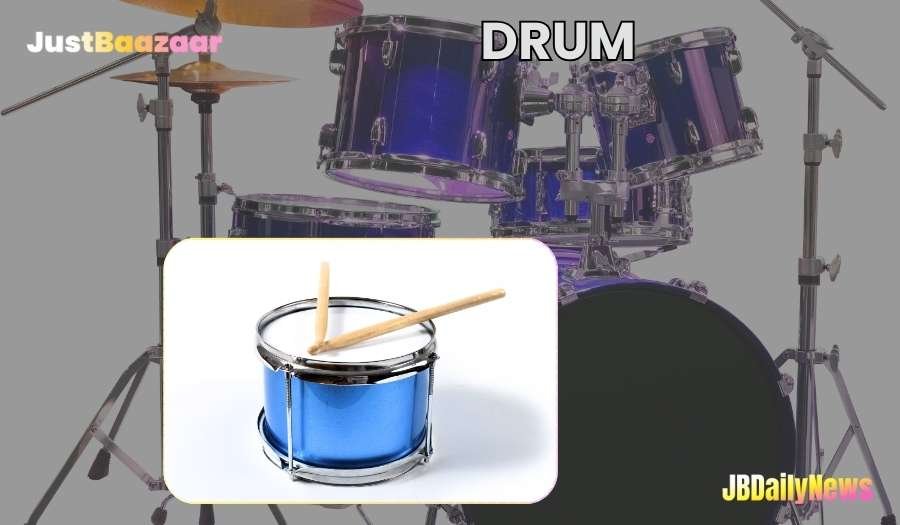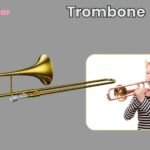Drums are among the oldest and most universal musical instruments, central to human culture and music for thousands of years. Known for their rhythm, energy, and wide-ranging applications, drums are essential in almost every musical tradition worldwide. This guide explores the drum’s history, mechanics, and importance in music.

1. How the Drum Works
The drum is a membranophone—a musical instrument that produces sound through the vibration of a stretched membrane. Here’s how it works:
- Membrane (Drumhead): The drumhead, typically made of animal skin or synthetic materials, is stretched tightly over a shell. When struck, the membrane vibrates, creating sound.
- Shell: The drum shell amplifies the vibrations from the drumhead. Different materials (wood, metal, acrylic) impact the tone and resonance.
- Striking Mechanism: Drums are played by striking the drumhead with sticks, mallets, or hands. Variations in force and rhythm create different sounds, allowing the player to control dynamics and intensity.
2. Types of Drums
Drums come in a vast array of types, each with its own unique sound and use:
- Snare Drum: Known for its sharp, crisp sound, commonly used in marching bands and rock music.
- Bass Drum: A large drum producing a deep, low sound, essential in rock, jazz, and orchestral music.
- Tom-Tom: Used in drum kits for fills and rolls, with various sizes for tonal variety.
- Conga and Bongo Drums: Used in Latin music, these hand-played drums produce warm, resonant tones.
- Djembe: An African drum played with hands, famous for its deep bass and sharp high tones.
3. The History of the Drum
Drums date back to prehistoric times, making them one of the earliest musical instruments in human history:
- Ancient Roots: Archaeological findings reveal drums used in ancient cultures worldwide, including Mesopotamia, Egypt, India, and Africa.
- Middle Ages and Renaissance: During this period, drums evolved in Europe, where they were used in military and ceremonial contexts.
- Global Spread: Drums became a cultural symbol and took on new forms in various regions. For example, Native American drums became central to spiritual practices, while African drums became integral to storytelling and dance.
4. The Drum Family
Drums belong to the percussion family and include any instrument that produces sound through striking. They range from hand-played drums to those struck with sticks or mallets. Other membranophones include tambourines, frame drums, and timpani.
5. Pronunciation, Spelling, and Etymology
- Pronunciation: The word “drum” is pronounced /drʌm/.
- Spelling: D-r-u-m.
- Etymology: The word “drum” is believed to come from the Middle Dutch word “tromme,” meaning a cylindrical object that makes sound.
6. Is the Drum Difficult to Play?
Drums require physical coordination and rhythm, and they can range in difficulty depending on the type:
- Basic Rhythms: Simple patterns are easy to learn, but mastering the instrument takes practice, especially for techniques like rolls and complex rhythms.
- Physical Demand: Drums, particularly large ones, can be physically demanding, requiring stamina and precision to play well.
Drums are accessible for beginners but allow advanced players to explore intricate rhythms and syncopations.
7. Similar Musical Instruments
Drums share characteristics with other percussion instruments:
- Bodhrán: An Irish frame drum played with a stick.
- Tabla: A pair of hand-played drums from India known for their expressive sound.
- Cajón: A Peruvian box drum often played by sitting on it and slapping its surfaces.
8. The Importance of Drums in Music History
Drums are vital in almost all musical traditions, from ancient rituals to contemporary genres:
- Folk and Traditional Music: Drums are essential in folk music worldwide, grounding dances and cultural practices.
- Classical Music: Drums play a role in orchestras, particularly the timpani.
- Modern Music: Drums form the backbone of many genres, from rock to jazz, hip-hop, and pop, where they provide rhythm, depth, and energy.
9. The Drum in Modern Times
Today, drums are ubiquitous and essential in live performances, recordings, and cultural events:
- Drum Kits: Central in rock, pop, and jazz, drum kits allow a single player to produce a range of percussive sounds.
- Electronic Drums: Developed for electronic and pop music, these drums offer synthesized drum sounds and are easily programmable.
The adaptability of drums in both acoustic and electronic forms ensures their presence in every musical genre.
10. Drums in Folk Music
Drums have been a part of traditional music for centuries, especially in dance and celebration:
- African Drums: Used in rituals and storytelling, where they convey emotion and narrate history.
- Latin American Drums: Instruments like the conga and bongo define the rhythm in Latin music genres.
- Indian Drums: Tabla and dholak feature prominently in Indian classical and folk music, adding intricate rhythms and emotive sounds.
11. Sizes of Drums
Drums vary in size, from small handheld drums to massive bass drums:
- Small Drums: Bongo and snare drums are typically compact, producing higher pitches.
- Medium Drums: Toms in drum kits come in different diameters to offer a range of tones.
- Large Drums: Bass drums, orchestral timpani, and African djembe can be large, producing deep and resonant sounds.
12. Drum as an Adjective: “Drum-like”
The term “drum-like” describes anything with similar qualities to a drum, especially in sound or shape:
- “The drum-like echo of the canyon added mystery to the landscape.”
- “His voice had a drum-like resonance, deep and commanding.”
13. Use of the Word in the English Language
“Drum” has multiple uses in English, often metaphorical or descriptive:
- “To drum up support”: To generate or encourage interest or enthusiasm.
- “Drum roll”: A technique on a drum to build anticipation, often before an announcement.
14. Drums in Hindi
In Hindi, the word for drum is “ड्रम” (drum), though specific drum types have their own names:
- Tabla (तबला): A classical Indian drum.
- Dhol (ढोल): A popular drum used in Indian folk music and celebrations.
15. Country of Origin
Drums do not have a single origin as they are one of humanity’s earliest instruments. However, drums like the djembeoriginated in West Africa, while the tabla originated in India.
Conclusion: Drums bring power, rhythm, and vitality to music, linking cultures, traditions, and genres. Whether in a drum circle, jazz band, or rock concert, they remain indispensable.
Read History of Music















